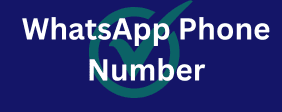In a world saturated with information and marketing messages, storytelling emerges as a powerful, human-centric approach to lead generation. Rather than listing features or benefits, stories connect with prospects on an emotional level, making your brand memorable, building trust, and illustrating how your solution can transform their lives or businesses.
Why Stories Resonate
Humans are wired for email data stories. They are more engaging, easier to remember, and more persuasive than raw data or facts alone. Stories bypass the logical brain and appeal directly to emotions, creating a deeper, more personal connection.
Key Elements of Effective Lead Generation Stories
1. The Protagonist (Your Prospect)
The hero of your story should be your ideal customer.
- Relatability: Describe their current situation, challenges, and frustrations in a way that your prospect immediately recognizes as their own.
- Empathy: Show the cornerstone of sustainable business growth that you understand their struggle and aspirations.
2. The Conflict (Their Pain Point)
Every good story has a problem that needs solving.
- Specific Problem: Clearly articulate the specific pain point, obstacle, or dilemma your prospect is facing.
- Emotional Impact: Go beyond the surface to describe the emotional toll of this problem (e.g., stress, wasted time, lost opportunities).
3. The Guide (Your Brand/Solution)
You are not the hero; you are fax list the wise guide who empowers the hero (your prospect) to overcome their challenge.
- Don’t Be the Savior: Your role is to provide the tools, knowledge, or pathway for them to succeed.
- Show Your Expertise: Briefly explain how your solution (your product/service) helps them overcome the conflict.
4. The Journey and Transformation (The Solution)
Show, don’t just tell, how the problem is solved and what the positive outcome looks like.
- Process: Briefly illustrate how your solution works or how they might use your lead magnet.
- Desired Outcome: Vividly describe the “after” state – the success, relief, efficiency, or pleasure they will experience. This is the ultimate benefit.
Where to Tell Your Stories in Lead Generation
Lead Magnets
- Case Study Stories: Detail a client’s journey from problem to solution using your offering.
- E-books/Guides: Frame educational content around a narrative, introducing concepts through relatable scenarios.
Website Content
- “About Us” Page: Tell your brand’s origin story, focusing on why you exist and the problems you set out to solve.
- Blog Posts: Use anecdotes and examples to illustrate points.
Ad Copy and Landing Pages
- Short Narratives: Craft concise stories that grab attention and highlight a common problem/solution.
- Testimonials: Present client testimonials as mini-stories of success.
Email Nurturing
- Sequence of Stories: Use a series of emails to tell a longer story, introducing a new aspect of the problem or solution in each.
By consciously weaving compelling narratives into your lead generation efforts, you can build a more profound connection with your prospects, making your brand more memorable and driving deeper engagement that leads to conversion.
